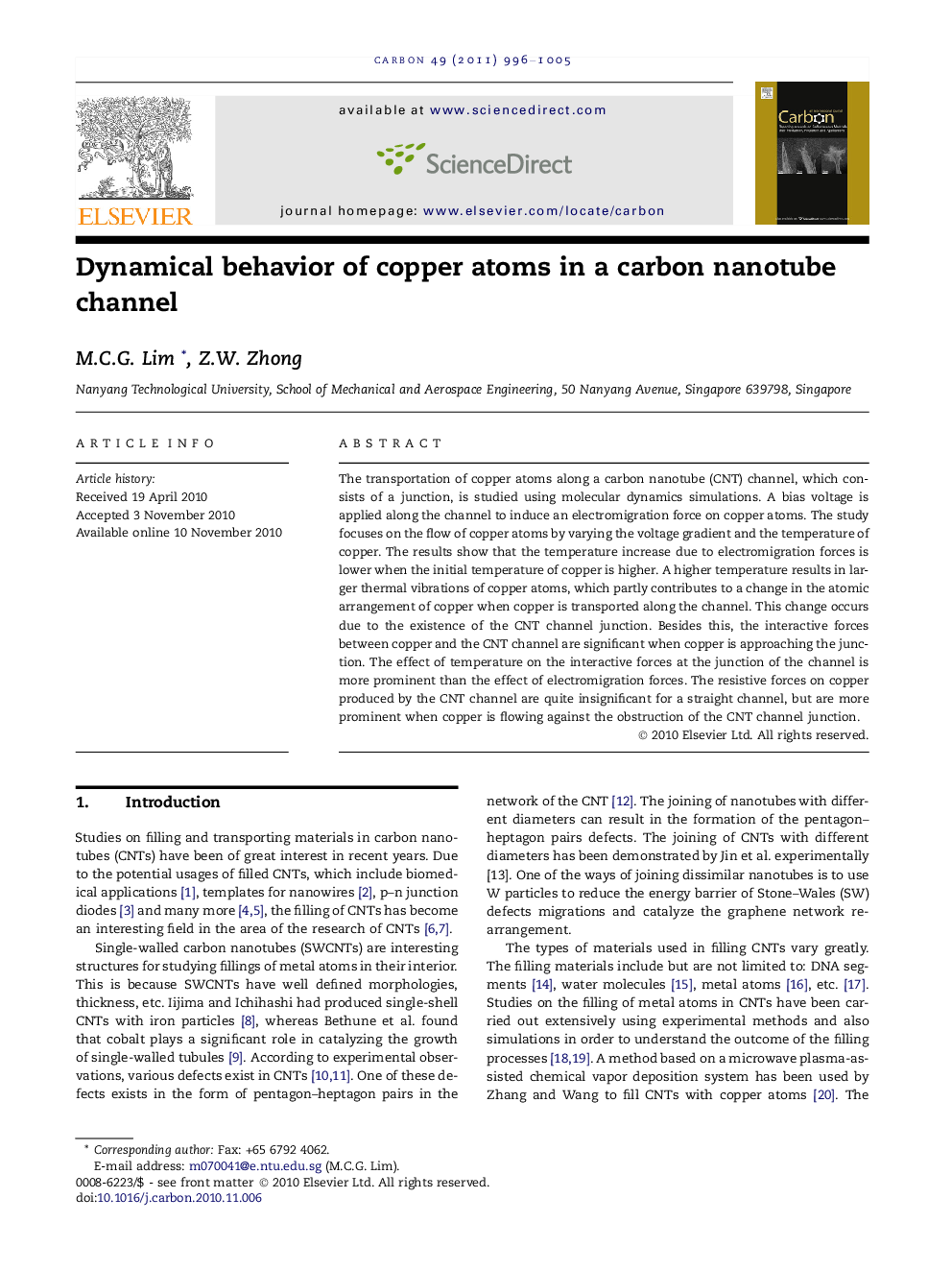| Article ID | Journal | Published Year | Pages | File Type |
|---|---|---|---|---|
| 1416627 | Carbon | 2011 | 10 Pages |
The transportation of copper atoms along a carbon nanotube (CNT) channel, which consists of a junction, is studied using molecular dynamics simulations. A bias voltage is applied along the channel to induce an electromigration force on copper atoms. The study focuses on the flow of copper atoms by varying the voltage gradient and the temperature of copper. The results show that the temperature increase due to electromigration forces is lower when the initial temperature of copper is higher. A higher temperature results in larger thermal vibrations of copper atoms, which partly contributes to a change in the atomic arrangement of copper when copper is transported along the channel. This change occurs due to the existence of the CNT channel junction. Besides this, the interactive forces between copper and the CNT channel are significant when copper is approaching the junction. The effect of temperature on the interactive forces at the junction of the channel is more prominent than the effect of electromigration forces. The resistive forces on copper produced by the CNT channel are quite insignificant for a straight channel, but are more prominent when copper is flowing against the obstruction of the CNT channel junction.
Graphical abstractThe flow behavior of copper atoms along a CNT channel, with the combination of different initial temperatures and applied bias voltages, is mainly affected by the effect of the elevated temperature, the blockage of the CNT junction and the driving force due to electromigration.Figure optionsDownload full-size imageDownload as PowerPoint slideResearch highlights► Shortening of the separation between copper atoms occurs at a CNT channel junction. ► A significant temperature change at a high voltage and a low temperature of copper. ► Copper flowing along a CNT junction leads to higher resistive forces.
